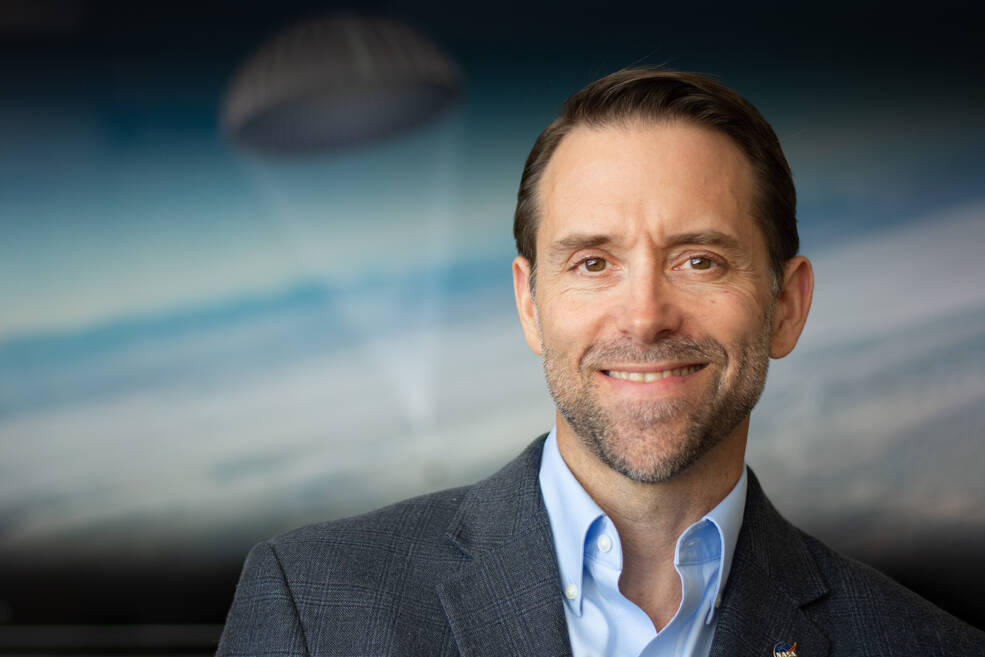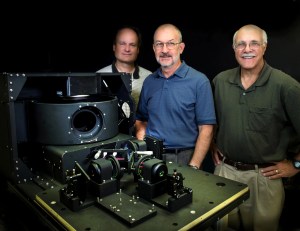Dr. Michael Moreau serves as the deputy project manager for OSIRIS-REx, a multi-year mission to travel to the asteroid Bennu and collect a sample. On Sept. 24, after a seven-year flight, OSIRIS-REx’s sample capsule will finally touch down in the Utah desert, becoming the first American mission to collect material from an asteroid in space and retur

Name: Michael Moreau
Title: Deputy Project Manager for OSIRIS-REx
Organization: Space Science Mission Operations (SSMO, Code 444)
Dr. Michael Moreau serves as the deputy project manager for OSIRIS-REx (Origins, Spectral Interpretation, Resource Identification, and Security-Regolith Explorer), a multi-year mission to travel to the asteroid Bennu and collect a sample. On Sept. 24, after a seven-year flight, OSIRIS-REx’s sample capsule will finally touch down in the Utah desert, becoming the first American mission to collect material from an asteroid in space and return it to Earth.
What is your role with the OSIRIS-REx mission?
I am the deputy project manager for OSIRIS-REx. I work in the Space Science Mission Operations project here at Goddard that’s responsible for managing OSIRIS-REx, and I’ve been in this role since 2019. Before that, I led the navigation efforts for the mission, but my specific job right now is basically “NASA recovery manager.” I’m responsible for managing all the planning and implementation of the sample recovery activities out in Utah.
How did you get to Goddard?
So, I started out as an intern at Goddard in a program called the NASA Academy. I had just graduated from college as a senior and mechanical engineer. I applied to this NASA internship, and I came here in the summer of 1994. And that was a really great experience, it kind of opened my eyes to the possibility that people actually work in the field of space, which I’d always been interested in. But I came from a rural community in Vermont, and there wasn’t a lot of aerospace in Vermont. This internship opened my eyes to the possibilities of working at NASA.
I used the connections I made at the internship to decide about going to grad school. I went to the University of Colorado. I applied for a NASA fellowship, and I had a fellowship that sponsored my graduate research from Goddard. And then I came here to continue that work at Goddard when I graduated with my Ph.D.
Why is it important that we went to Bennu in the first place? What are we hoping to learn?
Just from a general perspective, any time that we can explore a new world and see what it looks like and see what surprises it has in store for us, that’s an amazing moment of discovery. It’s like hiking to the top of a ridge and that moment of seeing the landscape on the other side for the first time. There’s an excitement about exploration that is very much part of space exploration.
Why we chose Bennu in particular, it’s a specific kind of asteroid that we believe is made up of material dating to the very formation of our solar system. The material that will be returned is unique relative to anything in the existing meteorite collection, and scientists all over the world are preparing to study the material and are excited to see what surprises it will have in store.
What are your plans for after the sample touches down?
You mean after I take a long vacation? One thing about this is it’s taken a lot of commitment of time from all the people that have worked on it. I think me and many others are interested in taking some time off once that sample is safely on the ground.
But the OSIRIS-REx spacecraft is continuing after it drops of the sample in September. There’s an extended mission called OSIRIS-APEX, and the objective is to rendezvous with a different near-Earth asteroid called Apophis in 2029. At least for the initial time frame, I’m going to work on that mission and try to help get that off on the right foot. The spacecraft has to be reconfigured, it’s going to fly quite close to the Sun, and there’s some challenges that have to be overcome just in the first few months of that mission.
Credits: NASA
Is it true you have an asteroid named after you?
That is true. It’s a very special recognition that they did for some of the team members that were part of the mission and development. The way it works is that asteroid discoverer has the right to propose a name. One of the people that worked on our mission was responsible for the discovery of thousands of asteroids through his involvement with the Catalina Sky Survey, which was responsible for autonomously searching for asteroids and discovering asteroids. So, the project submitted proposals to have asteroids named after team members as a very special form of recognition which is a pretty amazing honor. I can’t think of anything that’s cooler than that.
What do you know about your asteroid?
I know it’s a main belt asteroid discovered in 1999 and about 6 km (3.7 miles) in diameter, so it’s quite a bit larger than Bennu (which is about a third of a mile across), but we don’t know a huge amount about it. It’s one of hundreds of thousands of asteroids that are orbiting the Sun between Mars and Jupiter.
Would you ever want a spacecraft to travel to your asteroid?
Oh, yeah, that’d be the coolest thing ever. We should propose a mission to do a tour of all the OSIRIS-REx team members’ asteroids.
By Ananya Udaygiri
NASA’s Goddard Space Flight Center, Greenbelt, Md.
Media Contact:
Rob Garner
NASA’s Goddard Space Flight Center, Greenbelt, Md.
rob.garner@nasa.gov
Conversations With Goddard is a collection of Q&A profiles highlighting the breadth and depth of NASA’s Goddard Space Flight Center’s talented and diverse workforce. The Conversations have been published twice a month on average since May 2011. Read past editions on Goddard’s “Our People” webpage.




























